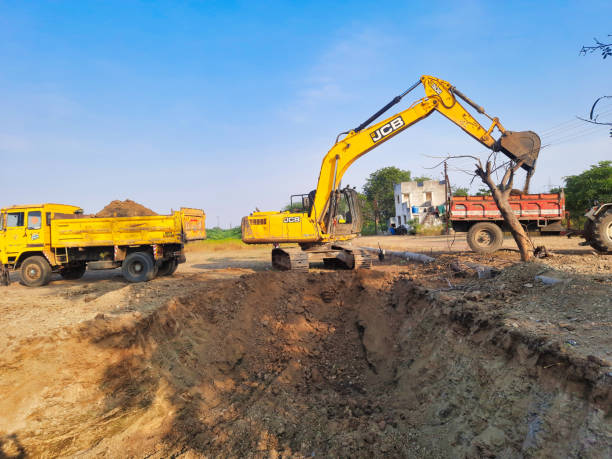Construction work on Transport for London’s (TfL) Silvertown Tunnel in east London has reached a major milestone this week as the drive on the first 1.1km long bore reaches the navigation channel under the River Thames. The drive on the new road tunnel has now reached 280m with an advance rate of 56m achieved over the weekend and the tunnel boring machine (TBM) is expected to have completed its journey under the river by Christmas. Contractor Riverlinx, the joint venture formed by Ferrovial, Bam Nuttall and SK ecoplant, is delighted with the progress after a conveyor fire on 27 September halted tunnelling work for 10 days. An investigation by a forensic specialist into the incident has now resulted in an industry wide safety notice being issued by Riverlinx as there are concerns that the trigger for the fire is also a risk on other tunnelling projects. Analysis of the fire and CCTV showed that hot works earlier in the day, which finished at 5.30pm, caused smouldering within the hopper chute lining causing it to ignite at 10.20pm despite it being a wet day. The TBM and conveyor were not operating between the completion of the hot works and the fire breaking out. The resultant fire caused damage to the high angle conveyor used to remove spoil from the tunnel but Riverlinx project manager Ivor Thomas said that the organisation’s evacuation policy worked exactly as planned and no one was hurt during the incident.

Thomas Told NCE that The Hopper Chute Lining Which Ignited.
was formed from Ultra-high-molecular-weight polyethylene (UHMWPE) which is a commonly used material for that application but it is also combustible. “The UHMWPE lining was used here because it helps prevent the London Clay from sticking to the hopper but we didn’t know that it was combustible at the time,” explained Thomas. “We believe the hot works started the smouldering which cause a very low intensity, hardly visible flame, which then ignited something more flammable at around 10pm which is why we brought in a forensic expert to fully understand the sequence of events. The fire caused a lot of damage to the head unit and cut the conveyor belt.” Thomas credits the use of higher grade conveyor belts throughout the project for the damage being limited to a small area though. Nonetheless, sourcing replacement parts from across Europe took 10 days. At the time of the fire, the TBM had completed 40m of tunnelling but by the start of this week, Riverlinx had installed 148 precast concrete tunnel lining rings taking the tunnel to the 280m length mark. Thomas said that the team is now focusing on getting the TBM to the south side of the river by Christmas when there will be a pause on tunnelling operations before restarting in the New Year. Breakthrough into the rotation shaft at North Greenwich is expected at the end of January and it is anticipated that it will take four months to turn the machine around ready for re-launch to drive the second bore. Riverlinx currently expects the second tunnel drive to be completed by the end of 2023 and TfL is currently slating 2025 as the opening date for the new road tunnel.


Recent Comments